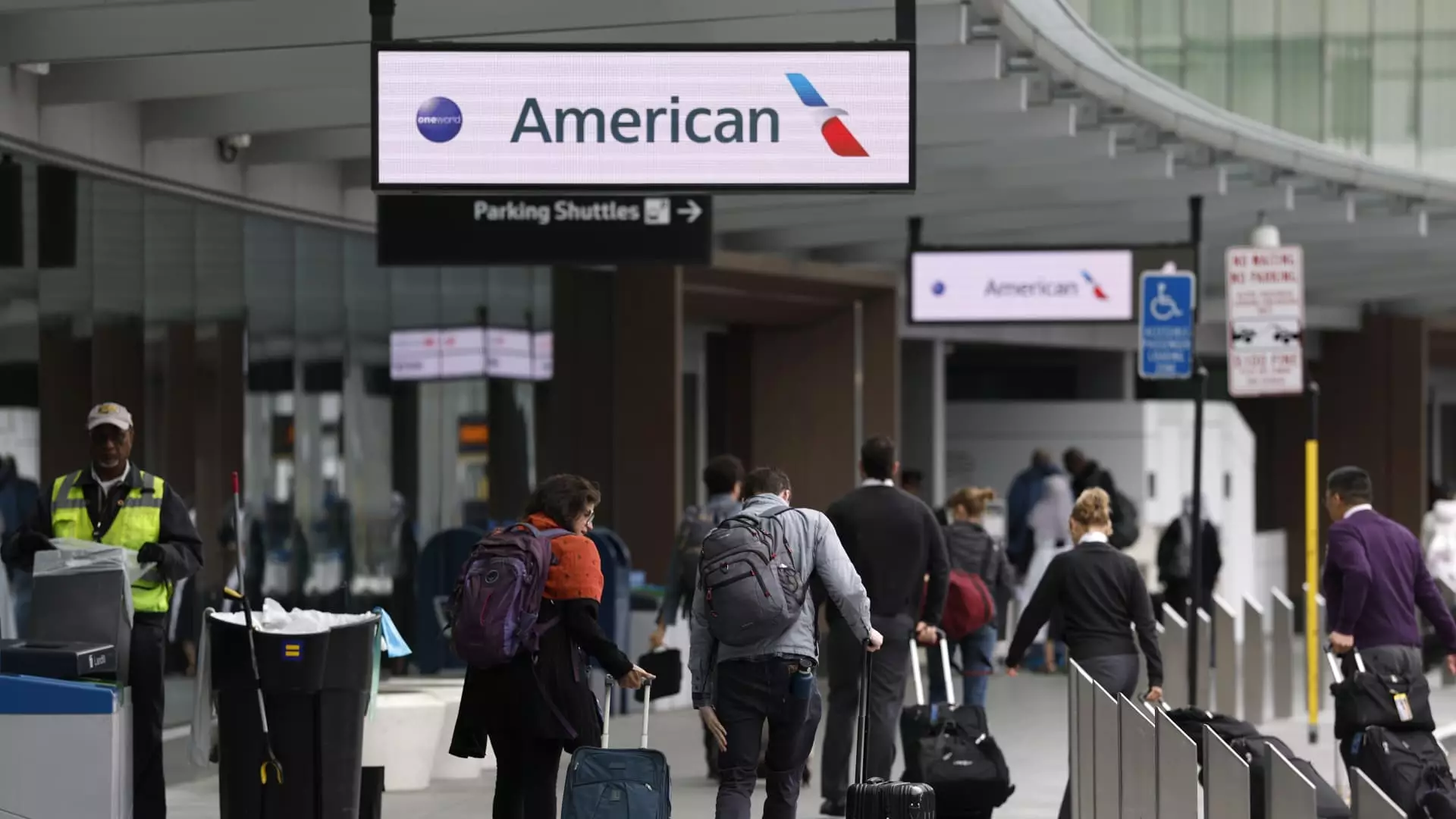The recent forecasts from airline executives paint a portrait more akin to a tempest than a bright sky for the aviation industry. Despite an optimistic outlook at the beginning of 2025, it seems that domestic travelers are pulling back on their wanderlust, and the factors contributing to this unsettling trend are multifaceted. Economic uncertainties—amidst ongoing volatility—have led to a chilling effect on consumer spending. The airline CEOs have directly pointed fingers at government policies that create an unstable market, leaving many passengers second-guessing their travel plans. It’s a stark reminder of the fragility of consumer confidence in the face of political upheaval, especially as discussions around tariffs and economic strategies continue to resonate across various sectors.
Capacity Cuts: A Response to Demand Plunge
In an effort to navigate this turbulent landscape, major airlines like Delta, Southwest, and American Airlines are now revising their capacity growth strategies. It isn’t merely reactive; it’s a necessity driven by the harsh reality of excess seat availability. The executives have acknowledged a growing backlog of seats that, without remedial action, could lead them down a path of unsustainable losses. The drop in fares—5.3% as reported—acts as both a blessing and a curse. While more affordable flights may entice last-minute travelers, they also signify a troubling oversupply situation, leading to tighter profit margins just as the summer travel season approaches.
The notion that corporate travel, traditionally a robust revenue generator, is stagnating adds an additional layer of disquiet. Business travelers, known for their tendency to prioritize convenience over cost, are hesitating to book, further amplifying the problem. It is alarming to see a scenario where companies are scaling back on travel, especially amidst a backdrop of corporate austerity, as highlighted by Conor Cunningham, a travel analyst. When corporations begin rethinking their travel strategies, the repercussions ripple throughout the aviation industry.
Consumer Reluctance and Economic Consequences
Consumer sentiment is fickle, and a climate fueled by uncertainty often leads to conservative spending. American Airlines’ CEO, Robert Isom, emphasizes the hesitation felt by consumers in light of economic fluctuations. The hard-earned dollars that could have gone towards vacation plans are now earmarked for caution as households brace for unpredictability. This behavior reflects a larger trend whereby Americans are reevaluating their discretionary spending. A consumer-facing this mindset ultimately presents a paradox for airlines: while demand remains high, it’s simply not at an expected peak.
The question then becomes whether this is a temporary blip or the start of a more concerning trend. The reality is troubling: as long as economic uncertainty hangs over the consumer’s head, airlines are likely to continue adjusting their strategies in a bid to fill planes, which could lead to further fare reductions and deteriorating profit margins. Lower prices might attract bargain hunters, but they simultaneously jeopardize the airline’s financial stability, potentially creating a vicious cycle that could amplify the downturn.
International Travel Resilience Amid Domestic Struggles
Interestingly, while domestic travel faces headwinds, international travel appears to be holding steady among U.S. travelers. There remains a palpable appetite for overseas trips; however, this trend does not alleviate the pressures faced by domestic airlines. The dichotomy is stark: as airlines navigate the complexities of their domestic route structures, they are obliged to compete in a global landscape where preferences may distinctly diverge.
It seems increasingly clear that consumers are willing to invest in international escapades, perhaps driven by the allure of experiences beyond their borders, which can, in turn, weaken the financial resolve of domestic carriers. This bifurcation adds another layer of complexity to the existing challenges, urging airlines to both innovate and adapt strategically to capture a shifting clientele while staying nimble enough to fend off the approaching recession.
The Call for Certainty
As the airline industry reels from these pressures, there is an underlying plea for stability—both in government policy and economic initiatives. Executives like Isom are calling for clarity in economic directions to restore confidence among consumers. While optimism remains that stability will usher in renewed growth, the timeline for such a turnaround remains uncertain. The ideal scenario would see an alignment of corporate strategies that embrace agility, ensuring that airlines are prepared to adapt to shifting consumer preferences and economic realities. The future of the airline industry hinges on navigating through this storm effectively, maintaining a delicate balance between competitive pricing and sustainable profit margins. The stakes are high, and the outlook, unfortunately, remains clouded.

